 PART 2 – Converting The Powers
PART 2 – Converting The Powers
In part 1 of this tutorial series, I explained how glasses help to make your vision clear, how the strength of your glasses is measured, and what the numbers on your prescription for glasses represents.
In this article, I will explain why a prescription for glasses does not always have the same numbers as a prescription for contact lenses, and I will explain the process that optometrists and opticians use to convert a glasses prescription to a contact lens prescription.
I want to stress right off the bat that I do not condone converting your own glasses prescription to contact lenses for the purpose of ordering contact lenses online or elsewhere. This information is strictly for educational purposes and is no meant to be a substitute for professional medical advice.

I am not a doctor. The information provided on this page is for general educational purposes only. You are not receiving medical advice or being prescribed contact lenses on this page. Please read Contacts Advice Terms of Use before continuing.
Contact Lens Prescription Vs Glasses Prescription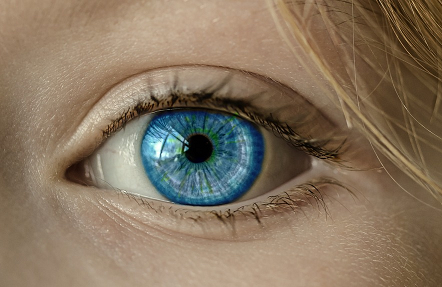
So, why are they different? That is an important question to address since after all, that’s the entire reason behind this (rather long) 4-part tutorial.
The Distance Between the Lenses
The fundamental principle behind why contact lens prescriptions and glasses prescriptions differ is:
The distance between lenses (whether glasses or contact lenses) and the eye affects the overall focusing power of said lenses.
Everybody knows that the lenses in glasses sit at some distance (usually between 1.0 and 1.5cm) from your eyes whereas contact lenses, by definition sit right on the eyes themselves. It is this difference that causes the prescription for each to be different.
If you’re one the more curious-minded people among us you might be wondering why the distance of a lens from the eye affects how strong it is. After all, the curvatures of the lenses themselves don’t change, right? The reason has to do with the optical properties of light and lenses and I won’t be getting into those details in this article.
How Does the Conversion Work?
The formula for converting a glasses prescription to contact lenses is simple. It is called the Back Vertex Formula and it looks like this:
Fc = F / (1 – xF)
Where:
Fc is the power needed in contact lenses
F is the power in the glasses
x is the distance between the lenses in glasses and your eye.
More specifically, x is the distance between your eyes and the lenses at the time when your eye doctor was measuring your prescription for glasses. This distance is not always written on your prescription for glasses. Barring any exceptional circumstances, optometrists usually use a standard distance of 12-14mm.
Formula or Charts?
The reality is that opticians and optometrists don’t really work out the formula stated above. Instead, they refer to charts where the formula has already been applied to all the powers that are possible to have in your glasses. They just look up the power they’re looking for, and the answer is right there waiting for them.
These charts are called Vertex Conversion Charts and they look like this:
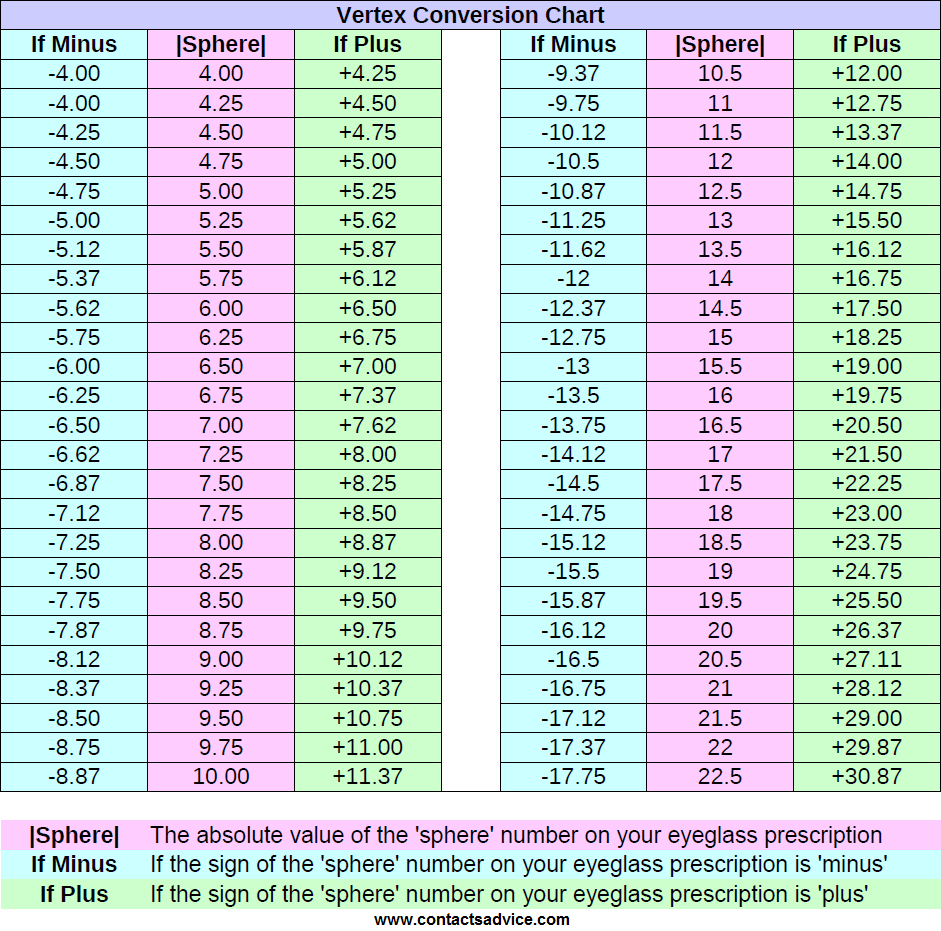
To use one of these, you look up the power on your glasses prescription in the middle ‘|Shpere|’ column. Now, if the number on your glasses prescription has a negative sign (-), the number directly to the left is the result of the Back Vertex Formula. If the number on your glasses prescription has a positive sign (+), then the number directly to the right is the result of the Back Vertex Formula.
For example:
Glasses Prescription:
| Sphere | Cylinder | Axis | |
| Right | -6.25 | / | / |
| Left | -5.00 | / | / |
For the right eye, we would look up 6.25 in the middle ‘|Sphere|’ column. Because it is a –6.25 (negative), we would look to the left on the chart. The number directly to the left of 6.25 is -5.75. That means that a -6.25 in glasses is equivalent to a -5.75 in contact lenses.
For the left eye, we would look up 5.00 in the middle ‘|Sphere|’ column. Because it is a –5.00 (negative), we would look to the left on the chart. The number directly to the left of 5.00 is -4.75. That means that a -5.00 in glasses is equivalent to a -4.75 in contact lenses.
The theoretical conversion to the prescription above would be:
| Sphere | Cylinder | Axis | |
| Right | -5.75 | / | / |
| Left | -4.75 | / | / |
Let’s try another example:
| Sphere | Cylinder | Axis | |
| Right | +5.00 | / | / |
| Left | +4.25 | / | / |
For the right eye, we would look up 5.00 in the middle ‘|Sphere|’ column. Because it is a +5.00 (positive), we would look to the right on the chart. The number directly to the right of 5.00 is +5.25. That means that a +5.00 in glasses is equivalent to a +5.25 in contact lenses.
For the left eye, we would look up 4.25 in the middle ‘|Sphere|’ column. Because it is a +4.25 (positive), we would look to the right on the chart. The number directly to the right of 4.25 is +4.50. That means that a +4.25 in glasses is equivalent to a +4.50 in contact lenses.
The theoretical conversion to the prescription above would be:
| Sphere | Cylinder | Axis | |
| Right | +5.25 | / | / |
| Left | +4.50 | / | / |
The two examples above are the simplest case scenarios. You have probably noticed that those prescriptions only have numbers in the ‘Sphere’ column, but none in the ‘Cylinder’ and ‘Axis’ columns. If your prescription looks like the ones above, you are lucky. It means that you have no astigmatism and all that is all that is required to back vertex your prescription.
Converting Prescriptions With Astigmatism
If you have astigmatism, your prescription will contain numbers in the ‘Sphere’, ‘Cylinder’ and ‘Axis’ fields. That is because people with astigmatism require 2 lens powers in front of each eye. Recall from Part 1, that the number in the ‘Cylinder’ columns do not represent either of the the actual powers in your glasses or contact lenses. It represents the difference between the two principle powers required for your vision.
For example:
| Sphere | Cylinder | Axis | |
| Right | -5.00 | -1.25 | 180 |
| Left | -4.50 | -0.75 | 180 |
For the right eye, the two principle powers are not -5.00 and -1.25 as the prescription might suggest. The -1.25 in the ‘Cylinder’ column represents the difference between the two powers, therefore the two powers here would be -5.00 and -6.25 (-5.00 + -1.25).
For the left eye, the two principle powers are not -4.50 and -0.75 as the prescription might suggest. The -0.75 in the ‘Cylinder’ column represents the difference between the two principle powers, therefore the two principle powers here would be -4.50 and -5.25 (-4.50 + -0.75).
Once you have determined your two principle powers, you would head back your Back Vertex Chart and find the converted value for both of your principle powers.
Let’s continue with this prescription:
| Sphere | Cylinder | Axis | |
| Right | -5.00 | -1.25 | 180 |
| Left | -4.50 | -0.75 | 180 |
For the right eye:
The 2 principle powers for the right eye are -5.00 and -6.25. Using the Back Vertex Chart we see that the converted values are -4.75 and -5.75 respectively. Now that we have converted our two principle powers we have to put the prescription back into Negative Cylinder Format.
This can be done in 2 easy steps:
1. The less negative number is the ‘Sphere’. In this case -4.75.
2. Calculate the difference between the more negative number and the less negative number. In this case we have -5.75 and -4.75. The difference is -1.00 and that is the new ‘Cylinder’.
For the left eye:
The 2 principle powers for the right eye are -4.50 and -5.25. Using the Back Vertex Chart we see that the converted values are -4.25 and -5.00 respectively. Now that we have converted our two principle powers we have to put the prescription back into Negative Cylinder Format.
This can be done in 2 easy steps:
1. The less negative number is the ‘Sphere’. In this case -4.25.
2. Calculate the difference between the more negative number and the less negative number. In this case we have -5.00 and -4.25. The difference is -0.75 and that is the new ‘Cylinder’.
Now we have all the converted powers for contact lenses. The new numbers would be:
| Sphere | Cylinder | Axis | |
| Right | -4.75 | -1.00 | 180 |
| Left | -4.25 | -0.75 | 180 |
I realize a lot of this can get pretty confusing, especially when dealing with positive and negative numbers. If you have any questions about the process explained above, feel free to leave it in the comments below.
Remember that I am here to help explain how these conversions are done. I am not a doctor, I am not prescribing you glasses or contact lenses, and none of this should be used as a substitute for professional medical advice.
In Part 3 of this tutorial, I will discuss how to deal with the axis during the conversion process, as well as special cases that require exceptions to the steps laid out above.

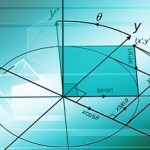
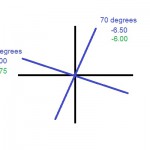
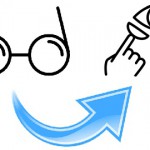
6 Responses
Brittany
Okay so I was wondering where the chart doesn’t go as low as my prescription does how I would do the conversion? Mine is:
OD -3.75 = -2.75 × 012
OS -3.75 = -2.75 × 175
Julie
Hi Brittany, good question! The reason why I didn’t make any charts for any prescriptions with ‘sphere’ lower than -4.00 is because those prescriptions don’t need to be back vertexed (converted). If you applied the back vertex formula to those numbers, it wouldn’t change at all (i.e., the numbers just stay the same).
However, with that being said, there are some exceptions, and your numbers would fall into that category.
Even though your sphere (-3.75) alone is not strong enough to need a conversion, because your sphere + cylinder (-3.75 + -2.75 = -6.50) is stronger than -4.00, it is significant enough to need to be back vertexed.
The conversion would look like this:
Right Sphere -3.75 Cylinder -2.25
Left Sphere -3.75 Cylinder -2.25
Please note that this is just for educational purposes. I am not a doctor and I am not prescribing you contact lenses or anything else.
Brittany
Ah that makes sense, I hadn’t taken that into consideration, thank you so much :)
Julie
You’re welcome :)
Daniela Rivera
so ive kind of followed along to the last example where it says “For the left eye:”
Im trying to convert my glasses prescription to contacts just to understand how its done. Im a little confused because for the left eye on my prescription it says in the cylinder section “SPH.”
also my sphere numbers are lower than the number in the chart. my right eye sphere says -0.50 and my left eye sphere says -0.75. How would i continue converting considering the circumstances?
Julie
Hi Daniela, good question!
When your cylinder section shows the letters “SPH” it means that you don’t have any cylinder. Eye doctors sometimes write “SPH” instead of “0” or “none”.
As for your sphere numbers, they are too low to need to be converted. That’s why you can’t find any charts with your sphere values. Only prescriptions with sphere numbers higher than -4.00 need to be converted.
So you really don’t have to do anything :)
Please note that this is just for educational purposes. I am not a doctor and I am not prescribing you contact lenses or anything else.